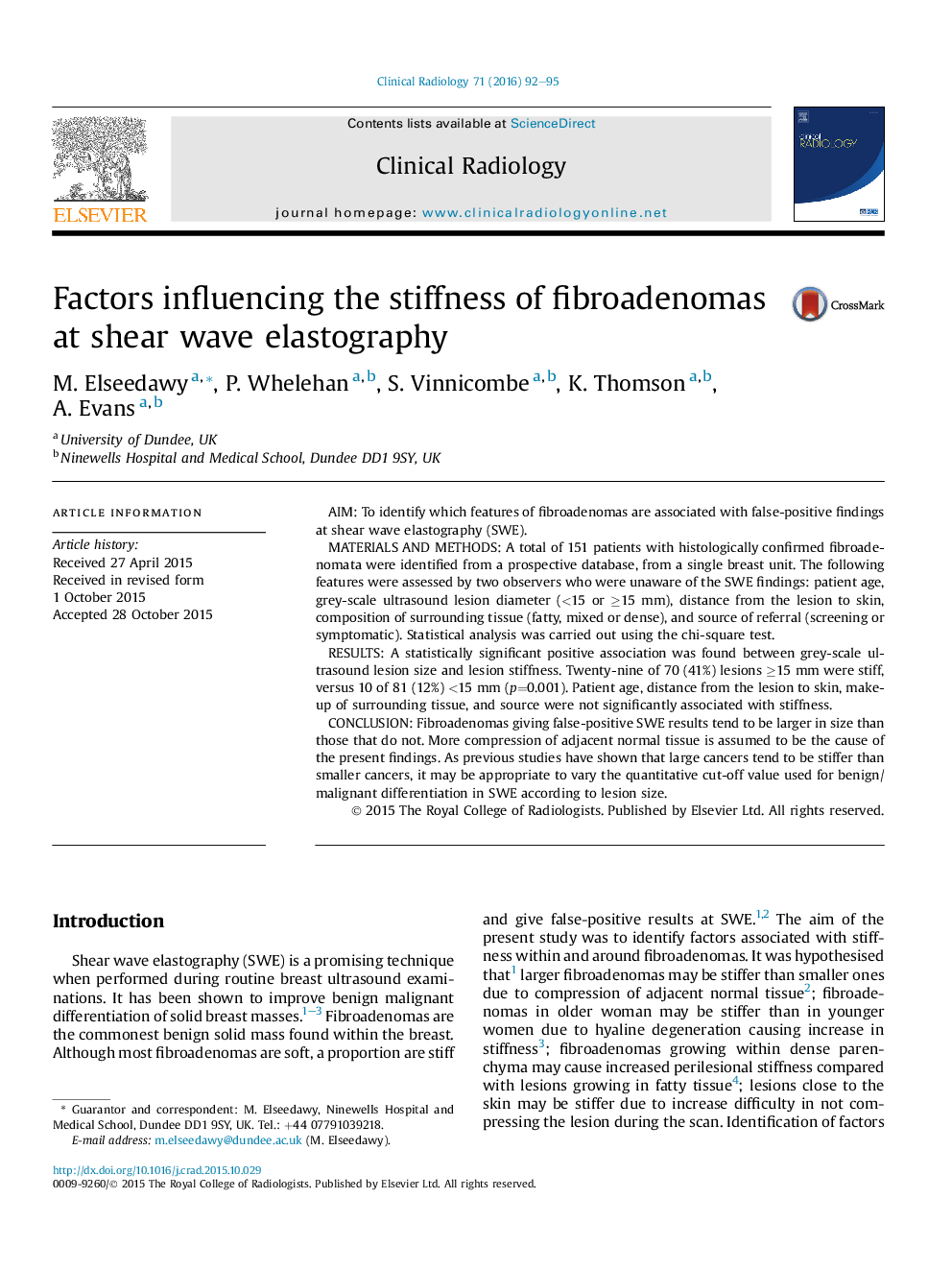| Article ID | Journal | Published Year | Pages | File Type |
|---|---|---|---|---|
| 3981453 | Clinical Radiology | 2016 | 4 Pages |
•Fibroadenomas giving false positive SWE results tend to be larger in size.•More compression of adjacent normal tissue is assumed to be the cause of our findings.•The age of the patient is not related to fibroadenoma stiffness.
AimTo identify which features of fibroadenomas are associated with false-positive findings at shear wave elastography (SWE).Materials and methodsA total of 151 patients with histologically confirmed fibroadenomata were identified from a prospective database, from a single breast unit. The following features were assessed by two observers who were unaware of the SWE findings: patient age, grey-scale ultrasound lesion diameter (<15 or ≥15 mm), distance from the lesion to skin, composition of surrounding tissue (fatty, mixed or dense), and source of referral (screening or symptomatic). Statistical analysis was carried out using the chi-square test.ResultsA statistically significant positive association was found between grey-scale ultrasound lesion size and lesion stiffness. Twenty-nine of 70 (41%) lesions ≥15 mm were stiff, versus 10 of 81 (12%) <15 mm (p=0.001). Patient age, distance from the lesion to skin, make-up of surrounding tissue, and source were not significantly associated with stiffness.ConclusionFibroadenomas giving false-positive SWE results tend to be larger in size than those that do not. More compression of adjacent normal tissue is assumed to be the cause of the present findings. As previous studies have shown that large cancers tend to be stiffer than smaller cancers, it may be appropriate to vary the quantitative cut-off value used for benign/malignant differentiation in SWE according to lesion size.
